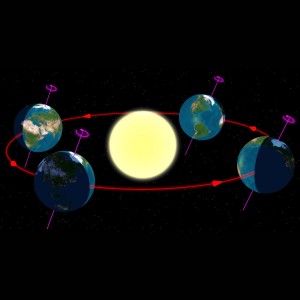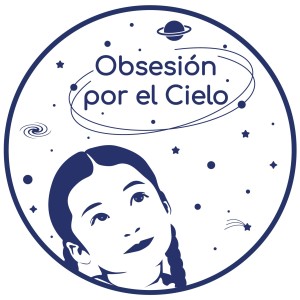
- Podcast Features
-
Monetization
-
Ads Marketplace
Join Ads Marketplace to earn through podcast sponsorships.
-
PodAds
Manage your ads with dynamic ad insertion capability.
-
Apple Podcasts Subscriptions Integration
Monetize with Apple Podcasts Subscriptions via Podbean.
-
Live Streaming
Earn rewards and recurring income from Fan Club membership.
-
Ads Marketplace
- Podbean App
-
Help and Support
-
Help Center
Get the answers and support you need.
-
Podbean Academy
Resources and guides to launch, grow, and monetize podcast.
-
Podbean Blog
Stay updated with the latest podcasting tips and trends.
-
What’s New
Check out our newest and recently released features!
-
Podcasting Smarter
Podcast interviews, best practices, and helpful tips.
-
Help Center
-
Popular Topics
-
How to Start a Podcast
The step-by-step guide to start your own podcast.
-
How to Start a Live Podcast
Create the best live podcast and engage your audience.
-
How to Monetize a Podcast
Tips on making the decision to monetize your podcast.
-
How to Promote Your Podcast
The best ways to get more eyes and ears on your podcast.
-
Podcast Advertising 101
Everything you need to know about podcast advertising.
-
Mobile Podcast Recording Guide
The ultimate guide to recording a podcast on your phone.
-
How to Use Group Recording
Steps to set up and use group recording in the Podbean app.
-
How to Start a Podcast
-
Podcasting
- Podcast Features
-
Monetization
-
Ads Marketplace
Join Ads Marketplace to earn through podcast sponsorships.
-
PodAds
Manage your ads with dynamic ad insertion capability.
-
Apple Podcasts Subscriptions Integration
Monetize with Apple Podcasts Subscriptions via Podbean.
-
Live Streaming
Earn rewards and recurring income from Fan Club membership.
-
Ads Marketplace
- Podbean App
- Advertisers
- Enterprise
- Pricing
-
Resources
-
Help and Support
-
Help Center
Get the answers and support you need.
-
Podbean Academy
Resources and guides to launch, grow, and monetize podcast.
-
Podbean Blog
Stay updated with the latest podcasting tips and trends.
-
What’s New
Check out our newest and recently released features!
-
Podcasting Smarter
Podcast interviews, best practices, and helpful tips.
-
Help Center
-
Popular Topics
-
How to Start a Podcast
The step-by-step guide to start your own podcast.
-
How to Start a Live Podcast
Create the best live podcast and engage your audience.
-
How to Monetize a Podcast
Tips on making the decision to monetize your podcast.
-
How to Promote Your Podcast
The best ways to get more eyes and ears on your podcast.
-
Podcast Advertising 101
Everything you need to know about podcast advertising.
-
Mobile Podcast Recording Guide
The ultimate guide to recording a podcast on your phone.
-
How to Use Group Recording
Steps to set up and use group recording in the Podbean app.
-
How to Start a Podcast
-
Help and Support
- Discover

La Duración del Día y la Noche en los Solsticios y Equinoccios. En este programa en vivo de “Obsesión por el Cielo” intentamos describir la geometría relacionada con la inclinación del eje de rotación de la Tierra con respecto a la Eclíptica (plano del Sistema Solar). El entender este concepto es importante para conocer la causa de las estaciones en la Tierra durante un año completo. Una consecuencia (entre otras) de la sucesión de estaciones es que la duración del día y la noche en una rotación terrestres cambia lentamente, dependiendo de la latitud del observador. En las regiones tropicales esta variación es relativamente baja, pero, a medida que viajamos hacia los polos, la diferencia entre la duración del día y la noche aumenta hasta llegar a las regiones polares, donde inclusive podemos experimentar rotaciones terrestres (días) de completa oscuridad o completa iluminación solar, si la presencia de atardeceres y amaneceres. Para ayudarnos con estas visualizaciones recomendamos estas ligas: 1) Simulador de Rayos Solares (http://astro.unl.edu/classaction/animations/coordsmotion/sunsrays.html), 2) Simulador de las Estaciones del Año (http://astro.unl.edu/classaction/animations/coordsmotion/eclipticsimulator.html), 3) Explorador de las horas de luz y oscuridad (http://astro.unl.edu/classaction/animations/coordsmotion/daylighthoursexplorer.html). Aparte de nuestra sección de noticias astronómicas semanales, en esta ocasión presentamos la sección de “¿Por qué soy astrónomo?”. En esta ocasión el Dr. Mauricio Reyes Ruiz, director del Observatorio Astronómico Nacional de San Pedro Mártir en Baja California nos comparte sus experiencias.
More Episodes
 2025-05-27
2025-05-27
 358
358
 2025-05-20
2025-05-20
 414
414
 2025-05-13
2025-05-13
 423
423
 2025-05-06
2025-05-06
 428
428
 2025-04-29
2025-04-29
 479
479
 2025-04-22
2025-04-22
 510
510
 2025-04-15
2025-04-15
 568
568
 2025-04-08
2025-04-08
 522
522
 2025-04-01
2025-04-01
 467
467
 2025-03-25
2025-03-25
 496
496
 2025-03-18
2025-03-18
 550
550
 2025-03-11
2025-03-11
 543
543
 2025-03-04
2025-03-04
 566
566
 2025-02-25
2025-02-25
 557
557
 2025-02-18
2025-02-18
 553
553
 2025-02-11
2025-02-11
 545
545
 2025-02-04
2025-02-04
 581
581
 2025-01-28
2025-01-28
 526
526
 2025-01-21
2025-01-21
 581
581
 2025-01-14
2025-01-14
 591
591
Create your
podcast in
minutes
- Full-featured podcast site
- Unlimited storage and bandwidth
- Comprehensive podcast stats
- Distribute to Apple Podcasts, Spotify, and more
- Make money with your podcast
It is Free
- Privacy Policy
- Cookie Policy
- Terms of Use
- Consent Preferences
- Copyright © 2015-2025 Podbean.com


